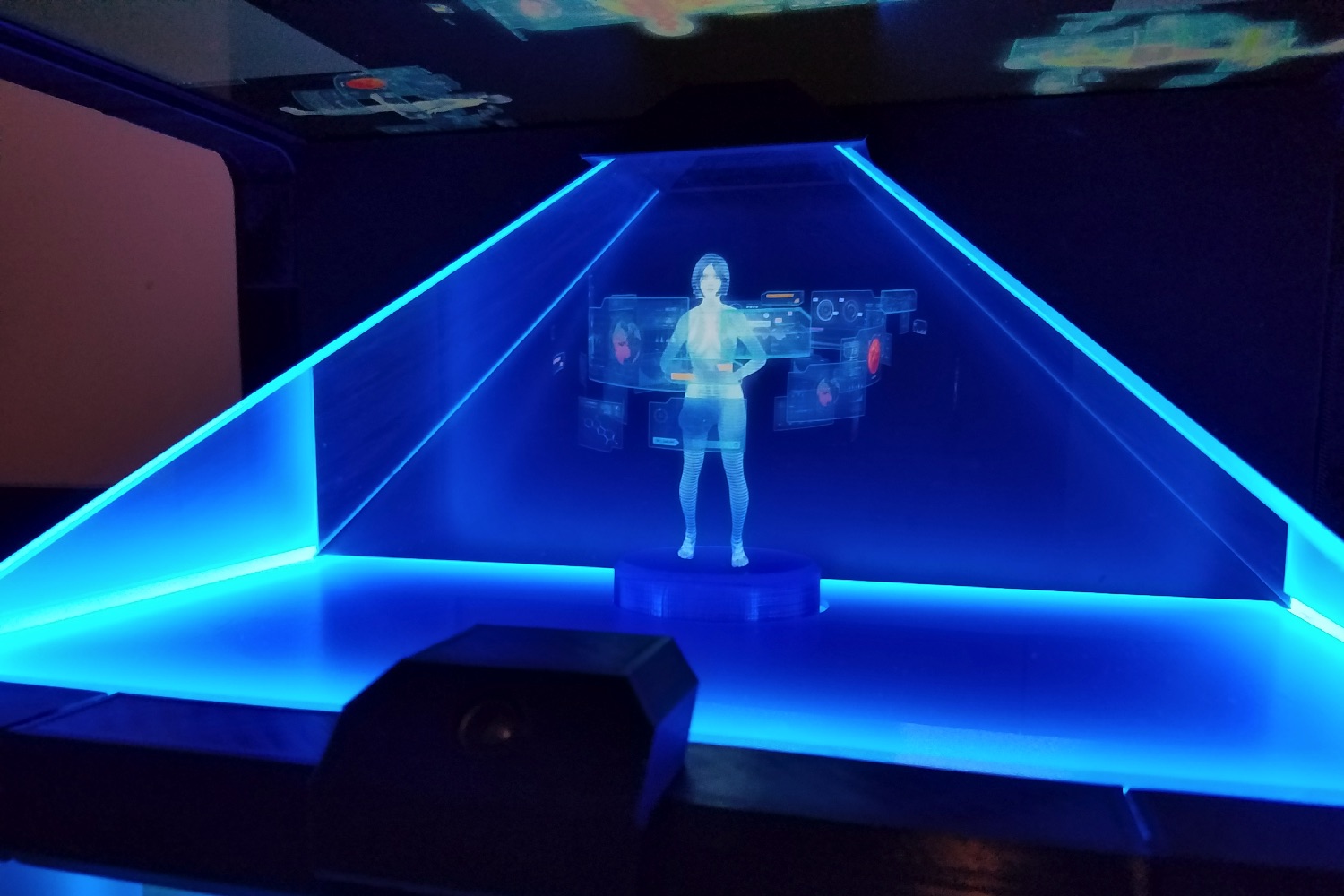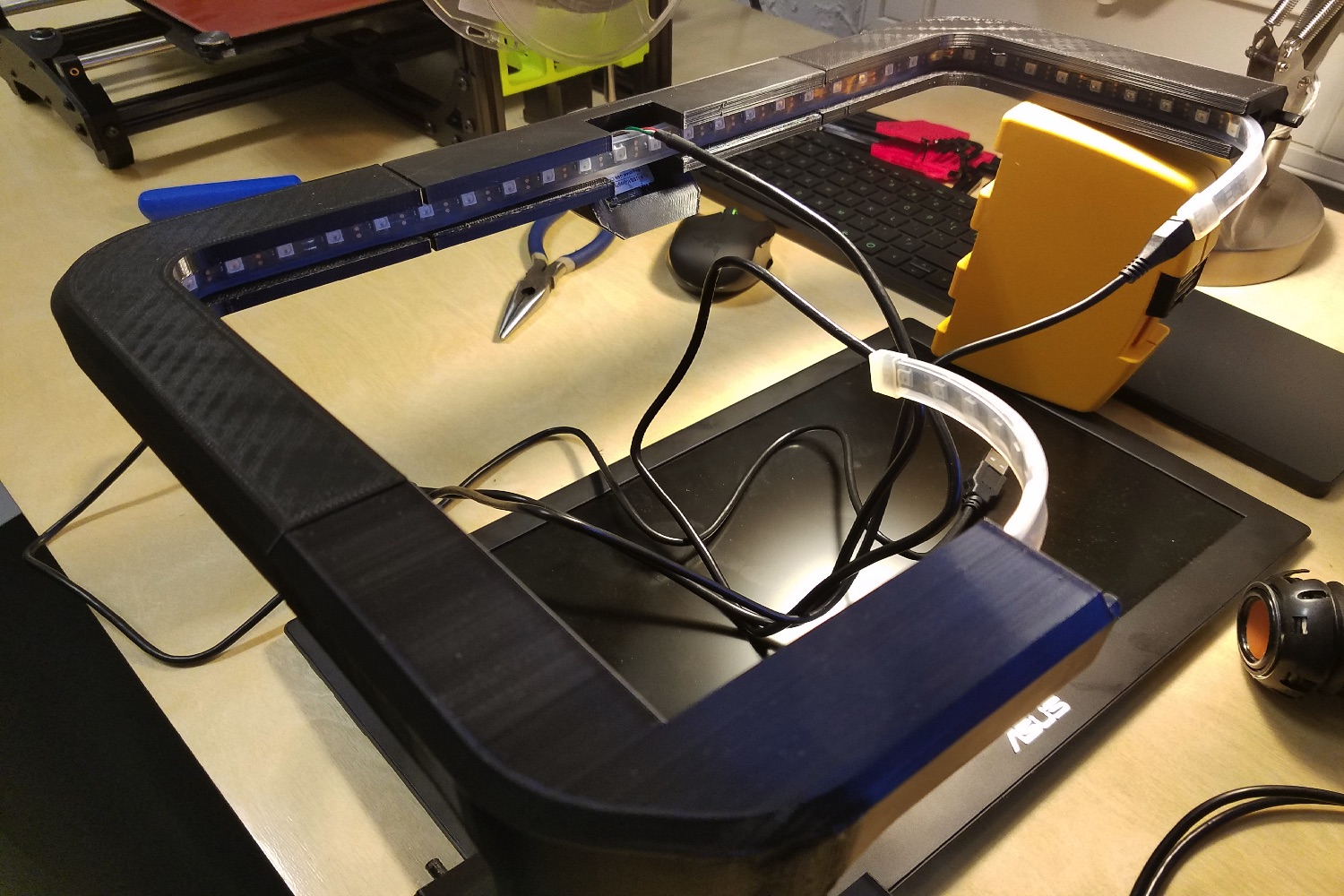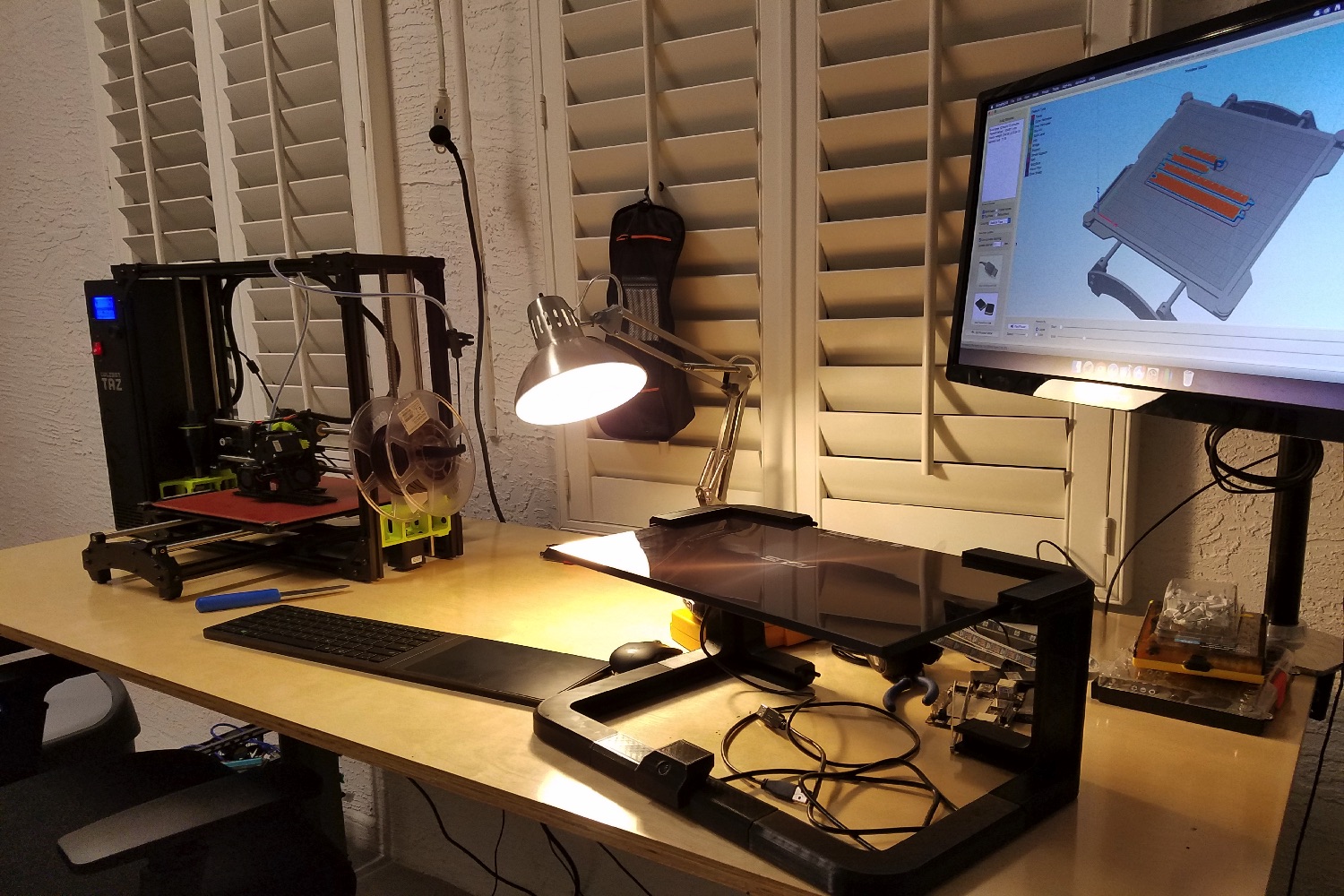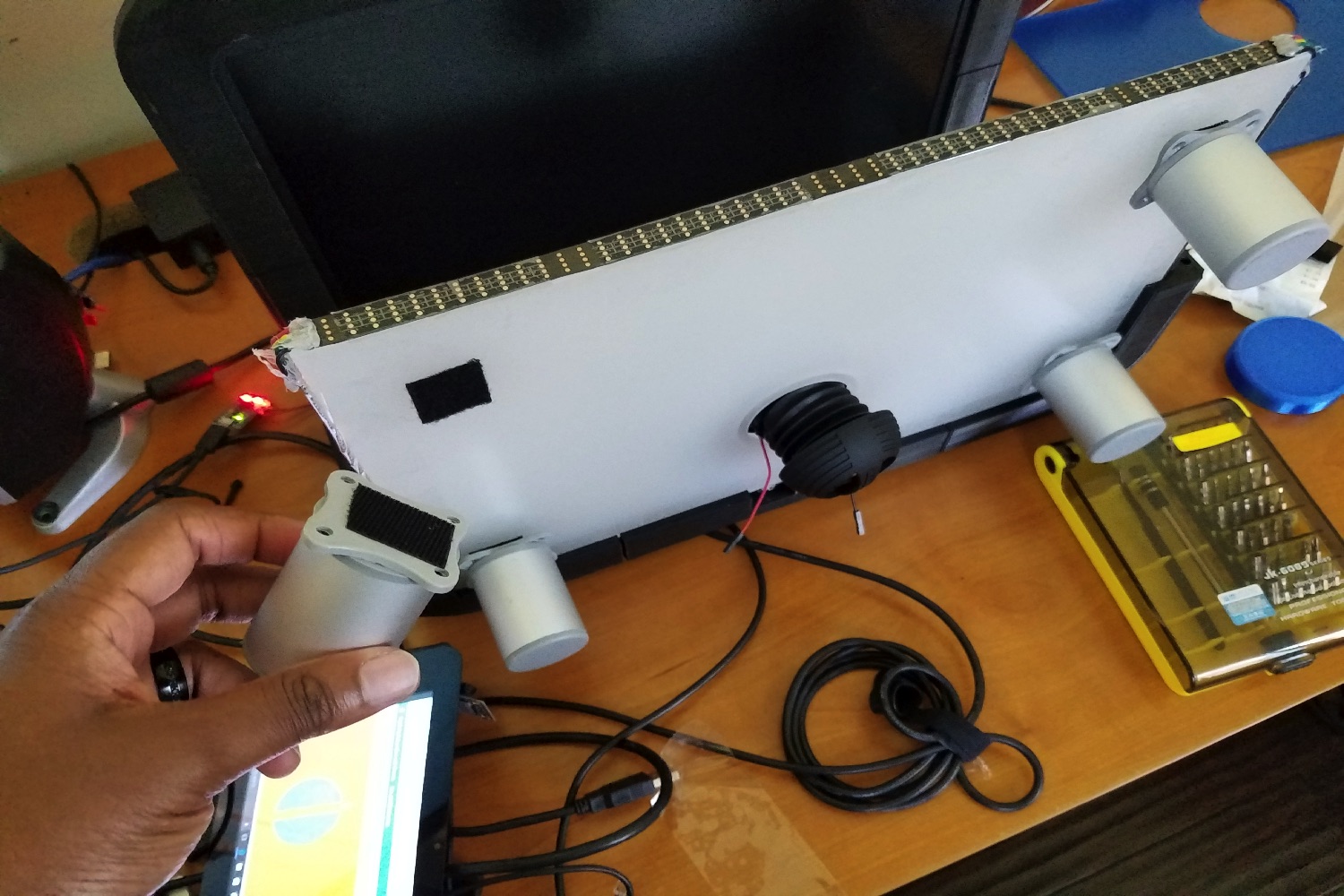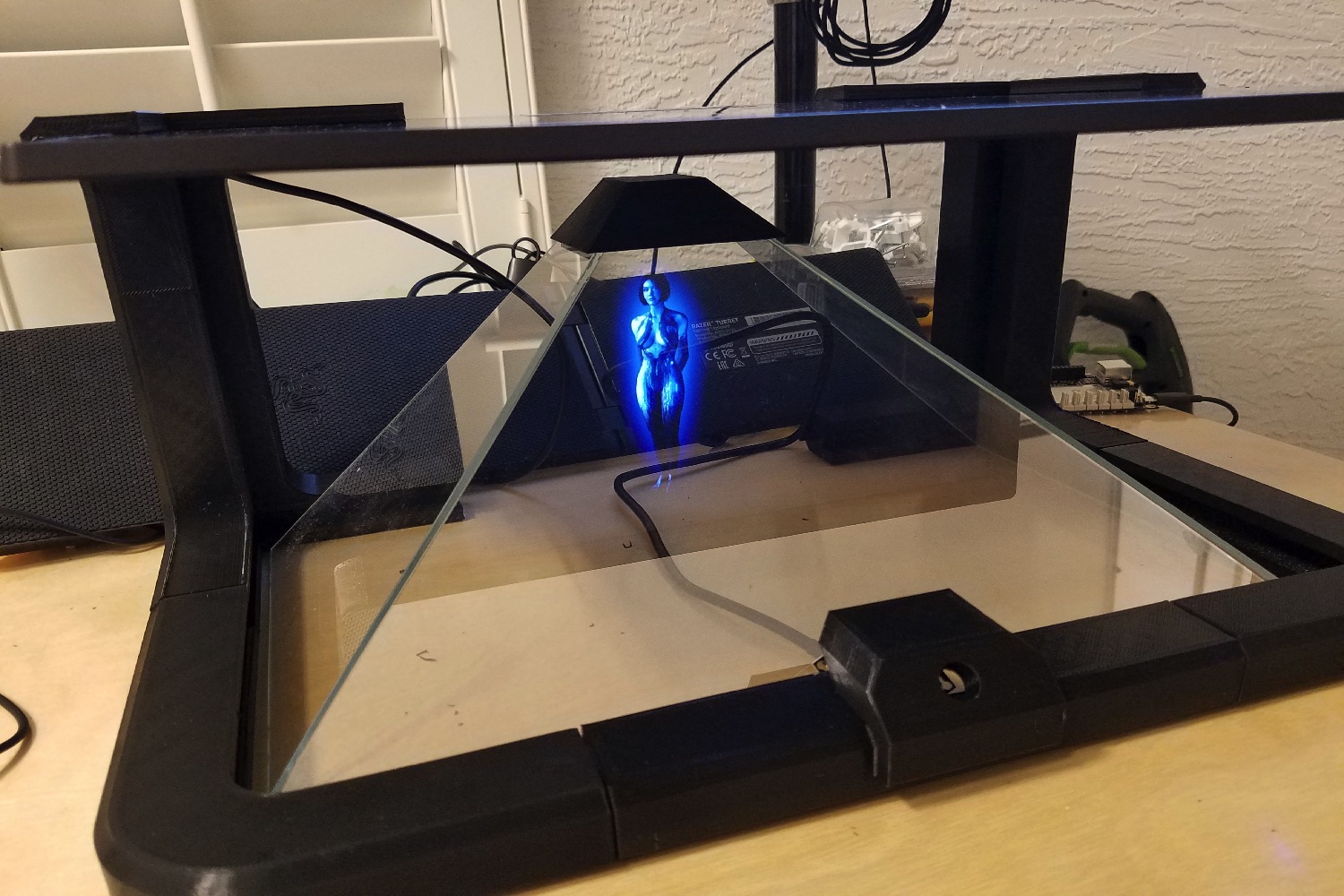That is because the Florida-based developer has created a holographic Cortana avatar to go along with its regular disembodied voice. His idea was to build a physical piece of kit that shows what a future Cortana-based home appliance would look like, using the holographic AI sidekick from the Halo video game franchise.
“I say ‘holographic’ as it’s a friendlier term, but the effect produced is essentially what’s called ‘Pepper’s ghost,’” Archer told Digital Trends. “[That means] specialized mirror glass that reflects a display at an angle which produces a translucent image. This is also how many teleprompters work. I went with a pyramid design which allows viewers to see the Cortana assistant on either side, in addition to the front.”
Archer’s wife stood in as the motion-capture model for Cortana, which Archer recorded with a pair of Microsoft Kinect motion sensors, before applying the data to his Cortana model in graphics engine Unity.
“The unit is powered with a Windows 10 machine that runs software to tunnel the OS’s native Cortana communications to the device,” he explained. “What the viewer sees is rendered from a Unity 3D application I built. Unity’s software is typically used to create games but has many other practical applications. Also included in the design is a 3D-printed frame I modeled, an omnidirectional microphone, and a speaker which sits in Cortana’s pedestal.”
The results make for a pretty darn fun home hack, which Archer plans to continue working on — although he is not yet clear what the end product will be.
“The project is still pretty much a work in progress,” he said. “I do intend to clean up and implement more animations to add variation to the interactions. While I’m not entirely sure on this specific project’s commercial ability, I intend on producing a very interesting product in the near future.”
